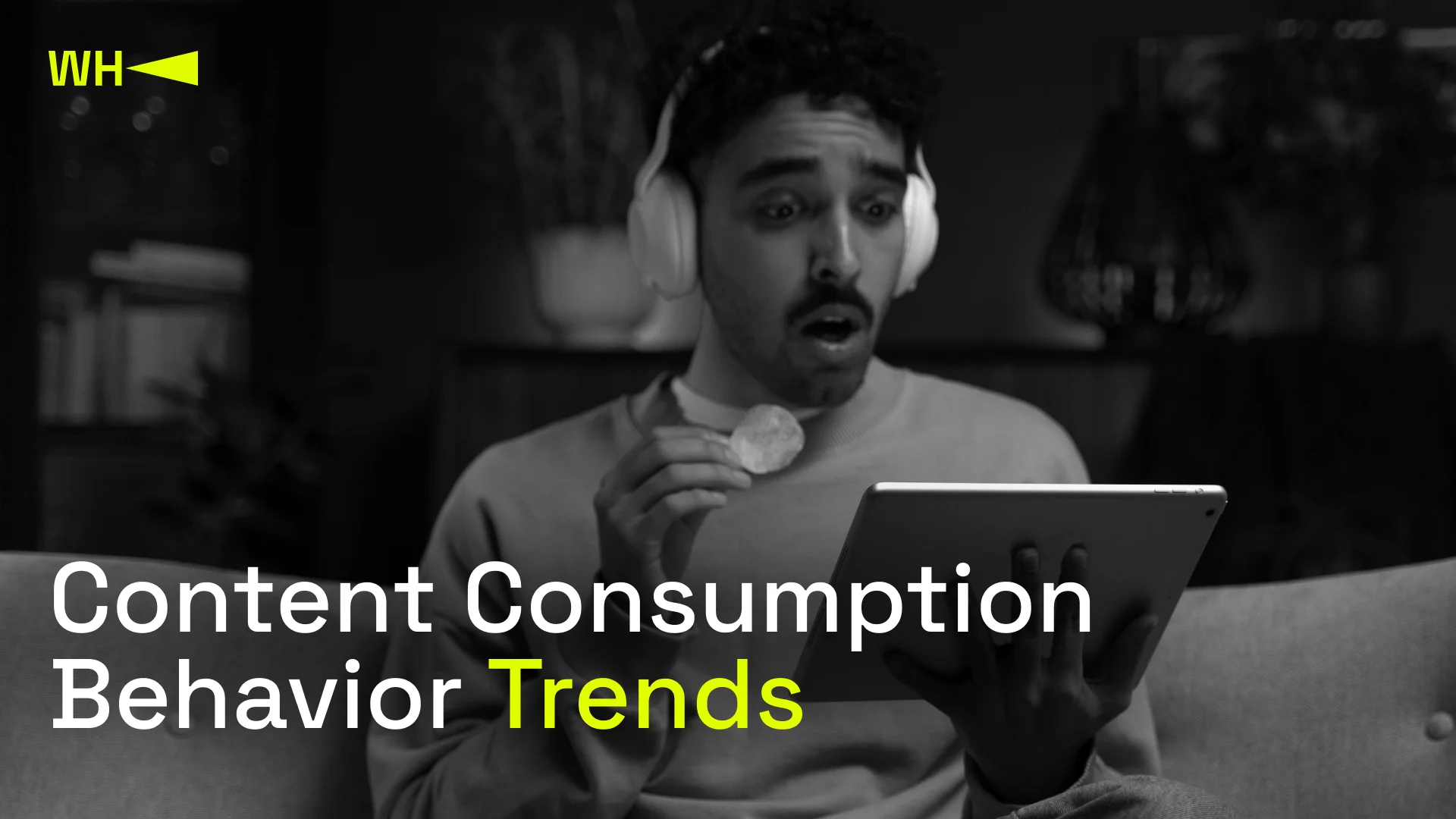Nov. 22, 2023
Content Consumption Behavior Trends

3 min read
How do you consume content? Do you read texts, analyze infographics, or watch videos? Do you use your smartphone, laptop, or tablet? Most likely, you, like many people, do not have a single source of information but engage with different content formats and platforms. However, by keeping in mind the exact way customers consume content, a brand can find a way to reach them.
Mobile takeover
In 2020, 68.1% of all website visits were from mobile devices, mainly smartphones. This doesn’t mean that mobile has an advantage over desktop — it’s rather a reminder to brands that if you don’t create mobile content, you are missing out on a huge number of potential fans.
Just a couple of taps are enough to access content wherever you are. You can browse social media, watch videos, read articles, respond to emails, and even sometimes work from your phone. While waiting for your coffee order to take away, a couple of minutes is enough to unlock your phone and check the latest news that align with your interests or look at an ad and make a purchase. So if a brand wants to catch the eye of a potential fan at this very moment, all content should be adapted for different devices.
Fortunately, platforms have made it much easier. Instagram, YouTube, and Facebook all have a desktop and a mobile version, which means all the content that the brand puts there is available to both mobile and desktop users. Working on our broadcasts, we also make sure that our fans can enjoy our shows regardless of the device from which they connect.
Content grazing
As I already mentioned, people get information from different sources and can do it simultaneously using different devices. For instance, a viewer might watch a movie while scrolling through social media feeds or catching up on quick news snippets. This phenomenon became known as content grazing. The habit of using several devices at once or switching from one screen to another is so strong that when giving it up, many users start feeling like they are losing control or an information deficit.
Viewers of our broadcasts, for example, may get distracted during intermissions. Knowing this, we offer additional entertaining content during breaks to encourage our viewers to stay with us. However, you should also keep in mind that viewers use several devices not only during pauses but for a number of other reasons. By the end of the day, they may not feel energized enough, so they turn to social media. Our task in this case is to give our viewers all the tools so they can stay with us: we invite them to participate in surveys on social media or write comments, remind them of other resources where they can find more information about us, etc. Essentially, we expand our content beyond the broadcast to stay connected with fans.
Video: the dominant content format
People prefer dynamic content such as videos. 78% of internet users watch online videos every week. And this is another reason for the brand to start investing in video production to increase fan engagement. We are talking not only about ads, but also about informative or entertaining content. For example, TikTok or Instagram lend themselves well to distributing short videos that can interest a wide audience of users. YouTube and Twitch are suited to both long narrative videos and entertaining broadcasts that can last for hours.
Statistics collected based on global trends will give you an idea about which content format is worth considering. However, there is simply no universal format suitable for any brand and its unique requirements. To create a comprehensive content marketing strategy, you must learn in as much detail as possible how your fans interact with your brand through content.